#Prince Shotoku's Restaurant
Text


[NEWS UPDATE] Sato Ryuji Goods that are Only Available until December 31, 2023
Sales Deadline: December 31, 2023
W-RYUJI'S SNACK KITCHEN PRESENTED BY PRINCE SHOTOKU'S RESTAURANT

For more information on the full range of goods available, please refer to this link: HERE
LIVE SPECTACLE NARUTO

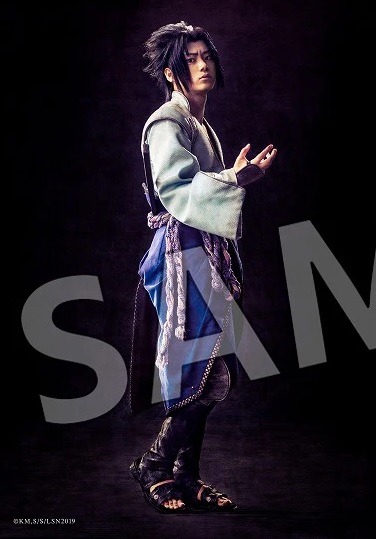
For more information on the full range of goods available, please refer to this link: HERE
#Live Spectacle NARUTO#Prince Shotoku's Restaurant#Prince Shotoku's Kitchen#NARUTO#Narusute#Sato Ryuji#Uchiha Sasuke
2 notes
·
View notes
Text
01&08/05 : Koya-san, Horyu-ji et Muro-ji - L’arrivée du Bouddhisme au Japon
Lors de ces deux jours fériés en France je me suis permis des petites excursions dans les alentours de Osaka en voiture, entre 1h et 2h de route de l’appartement. Vous noterez les noms compliqués de ces sites, sachez que le suffixe “san” signifie au Japon “Monsieur”, mais également “Montagne” d’où les maintes répétitions de “Fuji-san” il y a quelques semaines. Le suffixe “ji” quant à lui signifie “Temple”, mais peuvent également être utilisés “dera” ou “in”. Ce billet sera particulièrement long mais pas moins intéressant je l’espère !
Pour commencer, un petit aperçu d’où je suis allé et quand : en bleu le 1er, en rouge le 8.

Les routes au Japon ne sont vraiment pas passionnantes : on est loin des beaux paysages naturels français, ici ça se résume à des autoroutes survolant la ville d’Osaka (c’est malgré tout fascinant de conduire à grande vitesse entre les buildings à plusieurs dizaines de mètres de haut), ainsi qu’à des traversées de zones industrielles.
Koya-san est célèbre pour son ensemble monastique bouddhiste au milieu de 8 montagnes recouvertes de forêt, apparentant le tout à une fleur de lotus. De plus (et je ne l’appris que sur place), il est possible de passer la nuit dans des temples pour goûter la cuisine végétarienne et assister aux rituels matinaux des moines (mais cela a un prix, globalement 100 euros la nuit). Ce site est par ailleurs classé au Patrimoine Mondial. Pour la petite histoire : Kobo Daishi, moine de Shikoku (une île du Japon) étudie en Chine le bouddhisme ésotérique en 804 et commença à la promouvoir à son retour au Japon deux ans plus tard. Il a beaucoup de succès dans la capitale mais aspirant vivre dans les montagnes, il fût autorisé à fonder un monastère en 816 pour fonder une école de bouddhisme. Selon la légende, l’emplacement de Koya-san résulterait d’un lancer de son vajra (objet rituel) dans les airs. S’égarant dans les montagnes, Kobo Daishi rencontra un chasseur et son chien (qui serait en réalité le dieu de la Montagne) qui le conduisit face à un arbre dans lequel serait logé son vajra, à l’emplacement donc des temples installés aujourd’hui.
Je commence par le premier site, Garan regroupant 8 temples dont la plupart ont brûlé et furent reconstruits. Le principal monument est une pagode de 50m de haut à l’intérieur de laquelle de nombreux bouddhas sculptés et peints sont représentés.




On retrouve d’ailleurs dans ce complexe le Sanko no Matsu, pin dans lequel le vajra a été retrouvé.

Un peu partout dans la ville on ressent très clairement l’atmosphère religieuse de cette zone, avec un grand nombre de temples et de petites habitations privées qui servent certainement encore de lieu de prière ou de méditation. Parmi les temples encore en activité on retrouve aussi le Kongobu-ji datant du 19è siècle sur lequel on peut apercevoir des gravures dans le bois d’une incroyable précision


Je me dirige à pieds en direction du site principal de la ville et profite à la fois du beau temps, des beaux paysages ainsi que des jolis temples que je croise.


Je déjeune par ailleurs dans un petit restaurant tenu par un Japonais et sa femme venant de République Tchèque avec laquelle je discute un peu : cet endroit est généralement très très fréquenté par des touristes Japonais et internationaux mais bien entendu malgré le soleil, peu de gens prennent le “risque” de se déplacer trop loin. Tenir un restaurant est donc compliqué pour eux, le gouvernement leur ayant déjà versé des aides l’an dernier et réitéreront cette année : une année de plus et ils se voient déjà changer de domaine dans moins d’un an...une raison de plus pour espérer que les frontières rouvrent vite et que les restrictions soient allégées.
Après une marche au travers de la petite ville de Koya, j’arrive à Ichi-no-hashi (hashi signifiant pont), une petite passerelle permettant d’accéder à ce site se découpant en plusieurs partie. Tout d’abord un chemin pavé long de 2km serpentant dans une grande forêt de cèdres multi-centenaires. Ce chemin est bordé...de tombes. Plus de 200 000 tombes formant un cimetière bouddhique, appartenant à de grands seigneurs et moines Japonais leur permettant d’être présents au moment où Kobo Daishi sortira de sa méditation (explication un peu plus tard).





Vous remarquerez que ça ne ressemble pas au cimetière du Père Lachaise mais bien à une promenade un peu austère dans les bois. Pendant ce chemin on peu faire face à de nombreuses légendes, telle que croiser une pierre près de laquelle on peut entendre les pleurs des gens en enfer, ou bien un puis au fond duquel si notre visage ne se reflète pas on risque de mourir dans les 3 ans. A énormément d’endroit on retrouve aussi des gorinto. “Go”, signifiant 5, ce sont des ouvrages en pierre représentant les 5 éléments de bas en haut : la terre (carré), l’eau (boule), le feu (triangle), le vent (demi lune) et le ciel (larme). Les symboles de ces éléments sont gravés sur chaque partie de ces Gorinto.


On arrive finalement à la zone la plus sacrée du site et probablement du Japon, dont l’entrée est marquée par le Mizumuke Jizo, une ligne de statues en métal sur lesquelles les pèlerins versent de l’eau afin d’apaiser les âmes des ancêtres.


La photo juste au dessus est la vue du pont Kobo-no-hashi avec ses revers de planches en bois sur lesquelles figurent le nom des 37 divinités de Kongokai. A partir de ce point, il devient interdit de prendre des photos mais également de regarder son téléphone, courir et même parler! J’ai vu un grand nombre de restrictions mais c’est la première fois que j’en vois autant d’un coup, preuve de l’importance de ce site. Pourquoi ce site est-il si sacré? Car en 835, Kobo Daishi entama après un jeûne puis une méditation d’une semaine au terme de laquelle il avait prévu de s’éteindre. Son tombeau fût scellé et fût rouvert au 10è siècle par des moines curieux qui le trouvèrent vivant avec une longue barbe et cheveux. La légende raconte donc qu’il attend seulement l’arrivée du Bouddha du Futur pour se réveiller et c’est pourquoi tous les matins, des moines viennent apporter un repas rituel près de cette tombe. Aujourd’hui, l’école bouddhique compte 3500 temples et plus de 10 millions de fidèles.
Le pavillon principal est le pavillon des Lanternes, dont plus de 10 000 recouvrent les murs et le plafond. Le mausolée est situé derrière ce pavillon mais il est bien sûr impossible de s’approcher de bien près. J’ai d’ailleurs vu une personne chanter devant le mausolée et les centaines de fleurs qui le garnissent, c’était poignant. Cette dernière étape est donc très chargée en histoire et l’atmosphère est vraiment unique, marquée par le respect et la mysticité, bien que l’endroit en lui même ne soit pas mémorable pour son architecture.
Une des particularités de ce temple est l’interdiction d’accès aux femmes jusqu’au 20è siècle, période assez tardive à partir de laquelle la gente féminine fût autorisée à y accéder. La raison est que la présence de femmes risquerait de déranger les moines dans leur travail quotidien. Au contraire (préparez-vous à la transition) de Muro-ji où je suis allé le 8 mai qui a pour surnom le “Koya-san des femmes”. Cet endroit est également à l’abri d’une épaisse forêt et est dédié à la même école bouddhique que Koya-san à la différence que les femmes peuvent y accéder depuis de 12è siècle. Aujourd’hui encore environ 80% des personnes fréquentant ce temple sont des femmes (et je peux confirmer que bon nombre de femmes gravissent les plus de 700 marches permettant d’accéder au temple principal, l’Oku-no-in). Bien que l’atmosphère soit moins pieuse, le site vaut le détour pour son emplacement, ses nombreux temples et statues





Bon, il ne faut tout de même pas oublier que mêmes les endroits religieux nécessitent un peu de maintenance, ce n’est donc pas impossible de tomber sur des scènes assez originales, entre tradition et modernité

Je me suis également promené dans cette petite ville, ça fait du bien de voir qu’il existe des zones encore assez rurales avec des familles, logements et champs authentiques.


J’ai par ailleurs été assez surpris de voir sur la route une petite zone peuplée d’une 30aine de silhouettes étrangement immobiles, jusqu’à ce que je me rende compte qu’il s’agissait en fait de poupées grandeur nature! Un peu flippant mais également attendrissant, je pense que c’est une petite attraction touristique amateur qui doit en faire sourire plus d’un :)



Je termine enfin par un autre temple que j’ai fait dans la même journée, le Horyu-ji qui est tout simplement le plus ancien du Japon fondé en 607 par le prince Shotoku dont on retrouve nombre de ses représentations partout sur le site, acteur majeur de l’implantation du bouddhisme au Japon. Certaines constructions seraient parmi les plus vieilles constructions en bois au monde ce qui lui valu d’être le premier site classé au Patrimoine Mondial en 1993. Parmi elles, le Kondo (à gauche, le pavillon principal) et la pagode (à droite). Admirez encore une fois les créatures sculptées dans le bois!


A l’intérieur de ces bâtiments on retrouve des triades de Bouddhas, des fresques ainsi que des statues toutes plus précieuses les unes que les autres du fait de leur âge. Parmi elles la Triade du Bouddha Sakyamuni réalisé par un célèbre sculpteur en 623

On trouve aussi dans un musée une statue de Kudara Kannon, mondialement célèbre pour sa forme fine élancée et son air “présentant un mélange de grâce et de miséricorde”. Elle est seule dans sa pièce et intrigue beaucoup de touristes ce qui me faisait étrangement penser à notre chère Joconde.

Enfin, le reste du complexe est composé de beaux pavillons, statues et édifices dont chacun ont leur histoire, mais je ne vais pas rentrer dans le détail historique car on en aura pas fini !


Et voilà pour ce billet sur l’arrivée du Bouddhisme au Japon. Tout se passe dans la préfecture de Nara dont la ville principale porte le même nom (Nara). Je n’y suis pas encore allé, mais je n’y manquerai pas. C’est en tout cas passionnant de voyager dans le passé et de découvrir que chaque bâtiment, chaque statue possède sa propre histoire!
2 notes
·
View notes
Text
30,003 steps of deer, shrines and new cities
Today was a big day of getting the most out of my JR pass. I woke up early and grabbed the local train to Nara. The city is best know for the approximately 1200 deer that roam freely around Nara Park which encompasses most of the major temples, dating back to the 8th century. The deer are protected because, as legend has it, a mighty god that came to visit the aristocrats in Nara came in riding on a white deer. From the train station it looks like a very normal city, until you hit the park limits and the first of the deer. Many tourists, myself included, are stunned when they first see the deer. Many tourists, myself included, also buy crackers without fully realizing the deer will nip and chase anyone with crackers. To be fair, they are wild animals and the nips weren't that aggressive (more of a "hey, I'm back here and would like a cracker") -- that said, I got rid of my crackers fairly quickly. A few funny sights: - One woman tried to hide behind a fence - I guess forgetting that deer are excellent jumpers - It seemed odd to me that some families let the mother, who also happened to be holding a baby, buy the crackers! - A little asian boy, probably 12 years old, screaming the girliest scream I've ever heard - Countless little girls freaked out by this experience -- I think this would have been me at ages 4 - 14 Once I had a bit of fun with the deer I decided to get on with my busy schedule as I only had a few hours in Nara. I headed to the Kasuga Taisha Shrine which was a gorgeous walk lined with thousands (literally) of ancient stone lanters. This was the shrine the aristocrats back in the 8th century had built in the forest and its age alone made it awe-inspiring to me. Next I walked through the woods to Todaiji Temple. The original temple was built at the same time as Kasuga Taisha, but was burnt down twice due to war. I saw a model of the old temple and it was even bigger than today (though today is the largest wooden structure in the world). It also had two pagodas that flanked the temple which were each 100 meters tall. Just incredible what people were able to do in the name of religion and without modern technology... also saddening how every temple has its own story of destruction caused by war. Often that war was WWII. Inside this massive structure is a Giant Buddha, and that it is! I headed back to the train station, giving myself some time to check out local foods. I got a delicious sesame rice cake (so much better than what you have in your mind). A bit further into town I heard people chanting and a crowd gathering. When I got closer I realized they were making dough - one man quickly folding before the other slammed it down with a huge wooden mallot. What a way to knead dough! Of course it would be rude not to try it... it had an almost runny dough exterior, filled with black bean paste (which as you may have noticed is my new favorite thing). Next, I hopped onto the train to Osaka. You might ask why I didn't plan more than half a day in Osaka - read on and you'll understand. Things started off well as I miraculously guessed the right stop to get off which deposited me right next to the Osaka Castle. It was a really gorgeous structure, a Castle on the Hill as one of my favorite songs right now states. I only had a few hours (and am a little torn on museums right now given my Tokyo trip) so I moved on to the Shi-Tennoji Temple which dates back to 574 and is said to be the oldest official temple. It was built by Prince Shotoku who was one of the first people to bring Buddhism to Japan. It was relatively simple, though admittedly my standards have risen the past few days, but what really surprised me was that I was the only tourist there. Perhaps its lack of sparkle means its only frequented by locals, because every single sign was only in Japanese. To get to Sumiyoshi-taisha Shrine I took the Osaka tram. (Side note: If you ever come to Japan the first thing you should do is buy a Passmo - a card you can use on all the bus / subway / tram lines but also for any convenience store purchases. It has saved me scrambling for undecipherable coins too many times to count.) It was a pretty cool experience on the tram as you got to see the city during the trip -- although I must say that Osaka is a pretty standard "big city," and at the risk of sounding grim, one with little charm. That said, the shrine was another gorgeously manicured place and, in my opionion, the coolest feature was the Taiko-bashi bridge which was the steepest bridge I have ever climbed. I almost could have used my hands as if I were on a ladder. Finally, I had planned to grab dinner at a place recommended by one of Stephen's Wharton friends in the downtown Dotonburi area. I was pretty excited about this as I had been snacking for most of the day and was pretty tired and hungry by 5pm. I arrived at the restaurant and they said without a reservation they couldn't let me in. This is the first time I have been turned down as a single traveler, and while they claimed it was because they serve meals in separate rooms (so I couldn't just sit at a bar), I wonder if it was because after a day of traveling, and with my backpack, I looked a bit too "traveler-like." Oh well. I headed to the main strip of Dotonburi instead which was actually super cool and ended up eating at a yakitori, at a seat right on the river. With the sun setting over the river, lots of pedestrians on the wooden boardwalk and boat cruises moving by, it was super picturesque and it was beyond me why I was the only one sitting outside! I ordered a Japanese cocktail and while I was afraid it would be super sweet it turned out being fantastic - soju with club soda and lime. Yum. Alas, it was time to head back to Kyoto though. I was booked on the last train and planned plenty of wiggle room to make sure I wasn't stuck in Osaka for the night. (For reals.) Good thing too as I spent 30 minutes trying to find the subway to get to my train station. Amazingly, when I finally boarded the train back to Kyoto, I barely had time to plug in my phone and put stamps on a few postcards before we arrived. It's only 10 minutes on the Shinkasen from Osaka to Kyoto, meaning we were going an amazing 180 mph. Wowza. And over 30k steps later I am superbly tired. So time for rest before another busy day tomorrow!
1 note
·
View note
Text
FEATURE: Anime vs. Real Life – “Hand Shakers”
Hand Shakers follows around high school student Tazuna, who one day visits a university hospital in Osaka. There he meets Koyori, a young white-haired girl who’s been bedridden and unconscious for quite some time. Being reminded of his deceased sister, Tazuna approaches Koyori, only for her to suddenly wake up and reach out for his hand. All of a sudden, both of them get dragged into a different dimension called Ziggurat. With the special powers they gain by holding hands, they now have to fight other Hand Shakers in order to get a wish granted by God himself.
To be honest, that premise sounds as generic as it could be, but you’ve got to hand it to GoHands, the studio's unique and unmistakable visual style definitely makes the show stand out this season – for better and for worse. Now, you’ve probably gotten wind of the relatively negative buzz surrounding the show’s over-stylized art and animation direction, and while these accusations unfortunately hold true for the most part, I’d rather like to focus on one of the good aspects of Hand Shakers. The show actually has some pretty neatly traced photo backgrounds and its setting is based on some interesting real-world locations, but you’ll see that for yourself below. So, put on some fancy elevator music, and let’s jump straight to the comparison shots!
*All real-world images were taken with GOOGLE STREET VIEW (images I took myself are marked ‘WD’)
As I already mentioned above, Hand Shakers is set in Osaka, Japan's third biggest city and second largest metropolitan area after Tokyo with over 19 million inhabitants. Osaka can be kind of described as the eternal second. Economically the city is being trumped by Tokyo, and culturally by the relatively nearby Kyoto. However, Osaka still has a lot to offer, and is a very unconventional and flashy town, making it the perfect setting for a show like Hand Shakers. By the way, studio GoHands is also located in Osaka. Personally, I’ll always associate the city with good food and the vivid Dotonbori area.
The Tempozan Ferris Wheel is the city's largest Ferris wheel with a total of height of 112.5 meters. It’s located right next to the Osaka Aquarium Kaiyukan and offers some spectacular views of the bay area.
And that’s the just mentioned Osaka Aquarium Kaiyukan. I’m not the biggest fan of aquariums, but the cool whale sharks there were worth the visit.
The Osaka City Central Public Hall.
Shitennoji Temple’s Gokurakumon Gate. Shitennoji Temple was founded in 593 by Prince Shotoku and is one of Japan's oldest temples.
The Animate store in the Nipponbashi shopping district, which is basically Osaka’s equivalent of Akihabara. You’ll see Animate stores pop up quite often in Hand Shakers, as the anime is meant to commemorate the 30th anniversary of the Animate chain.
Hanshin Koshien Stadium.
The Shinsekai (literally translates to “new world”) in Osaka has gained the reputation of being one of Japan's more disreputable and dangerous neighborhoods, at least by Japanese standards. The neighborhood's northern half was modeled after Paris, and the southern half after New York. The Tsutenkaku Tower in the center is the district’s landmark, and was modeled after the Eifel Tower.
Takashimaya Osaka Store to the right.
Dotonbori is one of Osaka’s most popular tourist destinations. It was originally a theater area, but is now considered a very popular nightlife and entertainment district. The area is shaped by its many neon billboards and mechanized signs, the most prominent being the Glico Running Man sign on the right here. It’s definitely my favorite spot in Osaka. The Dotonbori signboards and the Ebisu Bridge in the foreground were also shown in Hand Shakers' key visual.
I’ll talk about Osaka Castle in more detail a little further down.
WD
In the fourth episode of Hand Shakers, Tazuna and Koyori lure Hayate and Chizuru, another pair of Hand Shakers, atop Osaka Castle for their all-out battle. Like many of the castles in Japan, this one too has often been destroyed and rebuilt. Construction began in 1583 by Toyotomi Hideyoshi, but the castle was destroyed soon after his death by Tokugawa troops. The castle was rebuilt in 1620, but the castle’s main tower soon after burned down by a fire caused by lightning in 1665. In 1931, the main tower of the castle was again reconstructed in the center of Osaka Castle.
WD
WD
The castle now houses a museum about its history. Also, the view up there is pretty nice.
WD
WD
Tazuna strolls around Dotonbori here with the Shinsaibashi Shopping Arcade in the background.
The yellow construction to the left is the Don Quixote Ferris Wheel.
WD
Despite suffering a bitter defeat against Tazuna and Koyori, Hayate and Chizuru still decide to celebrate at one of Osaka’s most famous crab restaurants, the Kani Doraku. Chizuru forces Hayate to pay for their meal, and as he correctly states, it’s quite expensive. The mechanized crab outside of the restaurants is of the Dotonbori’s most iconic signs.
Have you ever been to Osaka yourself, and what are your thoughts about Hand Shakers? Sound off in the comments below!
---
You can follow Wilhelm on Twitter @Surwill.
0 notes
Text
Traveling Through the Eyes of a Local Iowan
By Sze Hwa Ling / For the Collegian
On September 1977, 20-year-old Don McComb, who had thought that Japan was located in the southern hemisphere, had just landed at Haneda Airport. Growing up in Midwest Iowa, a young and naïve McComb would soon encounter a strange, new and fast paced culture that he will find initially hard to comprehend.
Before going for this life-changing experience, a young McComb would have never thought that he would become an experienced photography and an adventurous traveler. McComb said that the initial culture shock that he experience and other memorable experiences during his time studying in Japan was the major reason that led to him becoming an adventurous traveler.
He mentioned that he “hates long distance flights, especially the ones to Asia.” However, he also said that he still enjoys travelling, especially to countries in Asia. Additionally, he said that every time he had travelled to a country in Asia, the country that he travelled to “ looks different, it sound different, it smells different, it feels different and it definitely tastes different.”
During his time studying in Japan, he said that he was able to experience teaching in a professional setting, when he taught English to high-ranking employees of large corporations such as Honda. He said that the employees that he taught would generally bring him out for dinner after classes, which would generally “lead to an additional 2 to 3 hour lesson.”
He said that he was fortunate enough to be shown around Tokyo by various business people. This experience had allowed him to discover and experience certain aspects of Japanese
culture in the terms of food, cultural events and nightlife that mere tourists would never be able to experience.
McComb also said that the one highlight of his time in Japan was being able to take photos of the court of prince Shotoku Taishi, located in Horyuji Temple complex. While taking photos, he had also said his “heart was racing when he sneaked a picture inside the pagoda.” Due to this experience, this led to him to develop into more of a daring photographer.
Throughout his many years of travelling, McComb said that the other countries that he had travelled are Canada, Hong Kong, China, Singapore, Malaysia, Turkey and Vietnam. He said that one major reason that helped him determine which country he wants to travel is due to his desire to want to go to countries that have not completely been “westernized.”
Summer Zwanziger Elsinger, an associate professor of business and also one of McComb’s colleagues who had travelled with him to Turkey, had described him as a very open minded, intellectual and welcoming individual who is able to have a comfortable conversation with individuals regardless of age.
When he was in Turkey, McComb said he had visited Istanbul, the capital city of Turkey. He had said that Istanbul is one of the most interesting city that he had been. Additionally, he had also said that Istanbul is a city rich with different cultures, and this is not only due to it being the crossroad between Europe and Asia, but also it being a former major trading hub between Europe and Africa.
He said that another interesting fact about Istanbul was a city that was occupied many of the major “super powers” of the past such as Ancient Greece, Eastern Roman Byzantine Empire and the Ottoman Empire.
During his travels in Turkey, he said that he had also visited many historical architectural sites such as Aphrodisias, Didyma, Pergamon and Ephesus. He had said that he was surprised that there were no laws in Turkey that prohibited them to get up close to almost all the ancient Greek and Roman architecture located in those historical sites.
He had said he was able to get many detailed photographs of ancient Greek and Roman architecture due to him being able to get up close to ancient architecture, and also being able to climb on top of the fallen pillars in those locations.
During his time in Vietnam, McComb had travelled to many cities in Vietnam, which were Ho Chi Minh City, Hanoi, Hue, Da Nang and Hội An. He said Vietnam is a country that consists of a “culture that has been thriving for thousands of years and you just see layers and layers of history wherever you look.”
He said that even though Vietnam is a country that suffers from poverty, where there is still individuals who sell food and drinks out of “handmade shacks with dirt floors.” However, he had also said that many of the people who he met during his trip in Vietnam were friendly, helpful and welcoming.
After observing the daily lives of the Vietnamese people, McComb said that “people who are trying to make some money will try to open a restaurant or sell a few drinks or snacks because on a good day they will buy more but on a bad day they still had something to eat and drink, so they do not go hungry.” He said that one of the most memorable moments of that trip was visiting morning food markets. Additionally, he also described that the food markets in Vietnam are a little more primitive in terms of being able to see live birds and animals at those food markets.
McComb said that the major factors that had made him so interested to travel overseas is “to visit cultural sites, record and then document things, so he can bring them back and share them with his students in his classes.” He said that he is planning to travel to India in the near future.
0 notes
Text
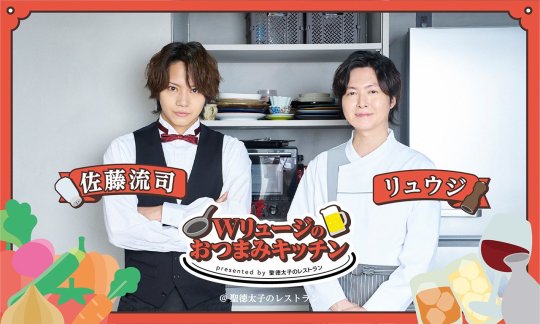
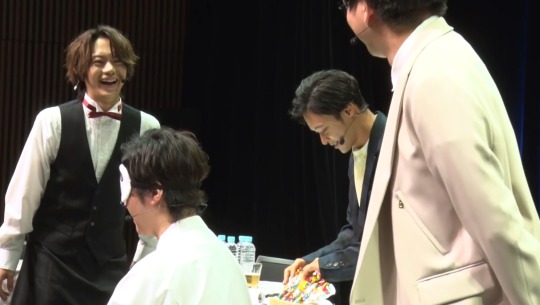
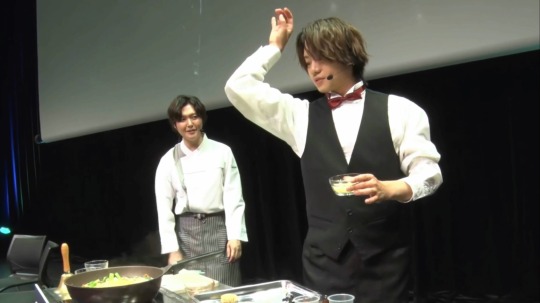
[VIDEO] Shotoku: Archive Streams for the "W-Ryuji's Snack Kitchen presented by Prince Shotoku's Restaurant" Event are Available Online
PARTICIPANTS
Sato Ryuji
Ryuuji
NOTE:
Ryuuji-san was a guest during the variety segment of "Prince Shotoku's Restaurant", which starred Sato Ryuji as Tokui Hijiri.
Since then, Ryuji has also been to Ryuuji-san's house and had drinks with him.
GUESTS
Session 01: Tokyo Hoteison
Session 02: Mashiko Atsushi (GENIC)
NOTE: Takeru, who is a member of Tokyo Hoteison, has worked with Ryuji before. They co-starred with each other on "Love Death Match ~National Treasure Boyfriend Audition~". They've also hung out in private before.
Ryuji was the one who invited him as a guest for this event, and Takeru happily accepted, commenting that it was his first time appearing in a friend's event.
PERSONAL HIGHLIGHTS
Ryuji laughing constantly and having the time of his life.
For both sessions, the guests have to play games against Ryuji. The winner gets to eat the dishes that Ryuuji-san has cooked while the loser doesn't. Of course, everyone wants to eat everything, so… Things happen. LOL!
In Session 01 (and Session 02), we get a look at Ryuji's dynamics with Ryuuji-san and Takeru, who he co-starred with for the first time when we first watched them onscreen, and it's really enjoyable to see how much more comfortable they've grown with each other since then. Additionally, in Session 02, we also get to watch Ryuji being a senior in his dynamics with Atsushi-kun, who is Ryuji's junior.
ARCHIVE STREAMS INFORMATION
Archive Stream Period: Now to January 30, 2024
To watch the streams, please refer to the links below.
Session 01: HERE
Session 02: HERE
GOODS SALES INFORMATION

The goods for this event is also currently available for purchase online. For more information on how to purchase the goods, please refer to this link: HERE
#Prince Shotoku's Kitchen#Prince Shotoku's Restaurant#Sato Ryuji#Ryuuji#Takeru#Shogo#Tokyo Hoteison#Mashiko Atsushi#GENIC
2 notes
·
View notes
Text

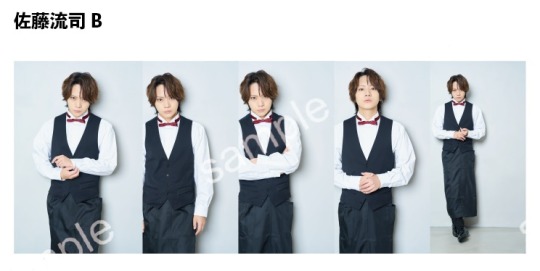


[NEWS] Shotoku: Goods for the "W-Ryuji's Snack Kitchen presented by Prince Shotoku's Restaurant" Event have been Released Online
GOODS
L-size solo bromide (set of 5 bromides)


Acrylic stand

Random card (1 out of 10 designs)


SALES LINKS AND INFORMATION
Sales Deadline: Now to 22.59 (Japan time) on December 31, 2023
To purchase the goods, please refer to the links below.
L-size solo bromide: HERE
Acrylic stand: HERE
Random card: HERE
NOTE:
[1] To purchase Sato Ryuji's goods specifically, click on the dropdown box and select " 佐藤流司 " (as indicated in the image below). Then, click on the blue button.

[2] There are two different sets for the L-size solo bromides, which are denoted as " 佐藤流司A" and " 佐藤流司B".
For more information about the proxy services available in Japan, please refer to this link: HERE
3 notes
·
View notes
Text



[VIDEO] Shotoku: Digest for the "W-Ryuji's Snack Kitchen presented by Prince Shotoku's Restaurant" Event dated September 25, 2023
PARTICIPANTS
Sato Ryuji
Ryuuji
NOTE: Ryuuji was a guest during the variety segment of "Prince Shotoku's Restaurant", which starred Sato Ryuji as Tokui Hijiri.
GUESTS
Tokyo Hoteison
Mashiko Atsushi (GENIC)
NOTE: Takeru, who is a member of Tokyo Hoteison, has worked with Ryuji before. They co-starred with each other on "Love Death Match ~National Treasure Boyfriend Audition~". Ryuji was the one who invited him as a guest for this event, and Takeru happily accepted, commenting that it was his first time appearing in a friend's event.
PERSONAL HIGHLIGHTS
Just Ryuji being Ryuji. Ryuji is very comfortable in being himself with Ryuuji-san and the guests, and it's so much fun watching him have a good time with them.
STREAMING LINK
To watch the episode, please refer to this link: HERE
The episode will be made available until 12.00 (Japan time) on October 09, 2023.
NOTE: VPN is required to access the site. For more information on how to use TVer, please refer to this link: HERE
8 notes
·
View notes
Text
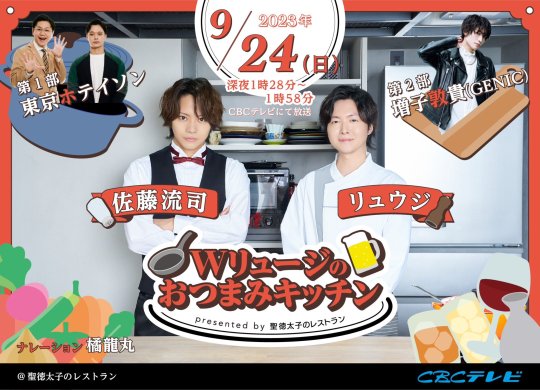
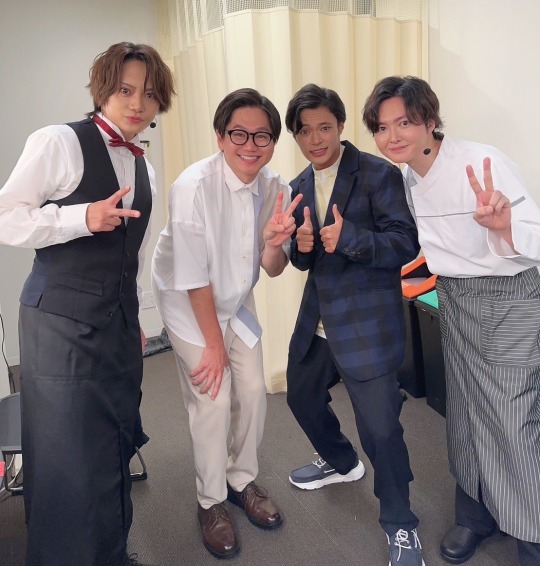
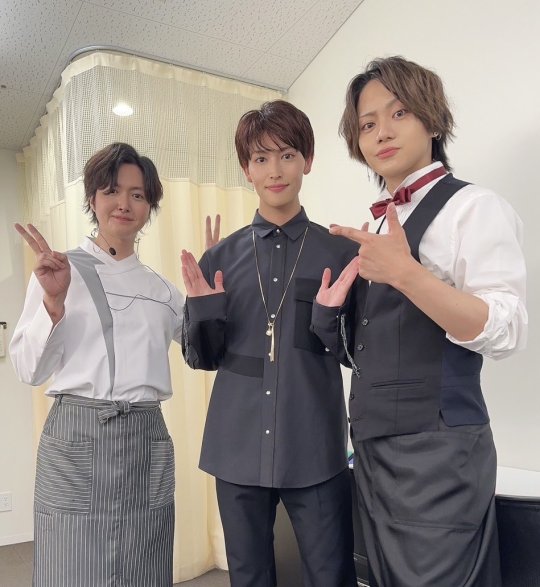
[NEWS] Shotoku: The Broadcast of the Digest for the "W-Ryuji's Snack Kitchen presented by Prince Shotoku's Restaurant" Event has been Announced
BROADCAST INFORMATION
Broadcast Date: September 24, 2023
Broadcast Time: 1.28am (Japan time)
Broadcast Channel: CBC TV
ONLINE STREAMING INFORMATION
Online Archive Period: 12.00 (Japan time) on September 25, 2023 to 12.00 (Japan time) on October 09, 2023
Online Streaming Platform: TVer
NOTE: The online streaming link to watch the event will be updated at a later date.
PARTICIPANTS
Sato Ryuji
Ryuuji
NOTE: Ryuuji was a guest during the variety segment of "Prince Shotoku's Restaurant", which starred Sato Ryuji as Tokui Hijiri.
GUESTS
TOKYO HOTEISON
Mashiko Atsushi (GENIC)
NOTE: Takeru, who is a member of TOKYO HOTEISON, has worked with Ryuji before. They co-starred with each other on "Love Death Match ~National Treasure Boyfriend Audition~".
To watch some of the videos on TikTok that feature the both of them, please refer to the links below.
Video 01: HERE
Video 02: HERE
Video 03: HERE
Video 04: HERE
Source(s): ( x , x , x )
6 notes
·
View notes
Photo
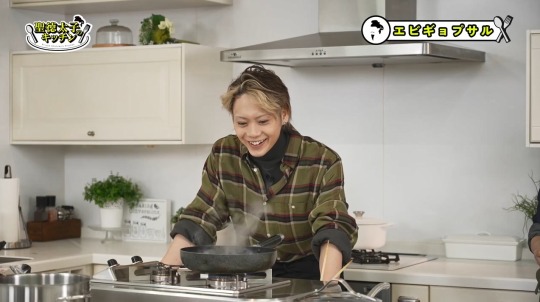
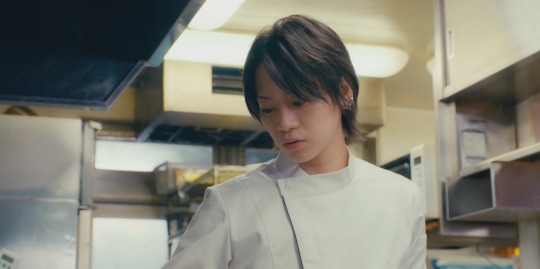

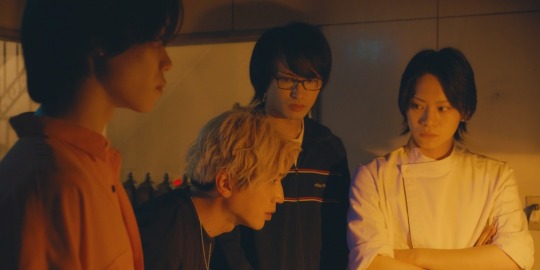
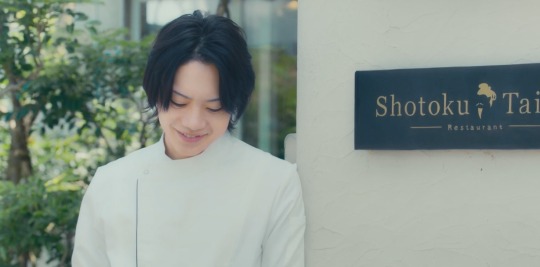

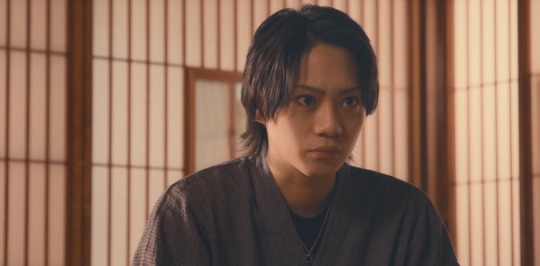
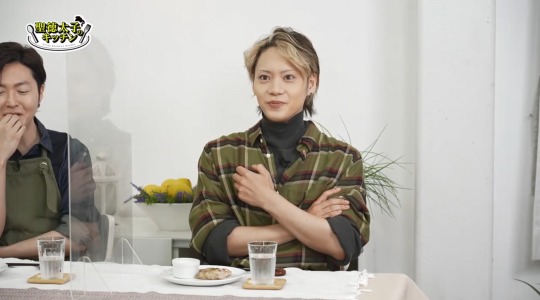
[NEWS UPDATE] Shotoku: The Deadline to Pre-Order the Blu-Ray for "Prince Shotoku's Kitchen" is February 28, 2023
RELEASE DATE
May 2023
SUMMARY
At a corner of a residential area, there is a signboard that says "Prince Shotoku's Restaurant".
A restaurant that no customers go to, it caters for "delivery-only" where one chef cooks dishes of 10 different genres. A restaurant that answers, not only requests for Western, Japanese and Chinese cuisine, but everything from rice meals to junk food and desserts, and menus are developed for everything.
Manning the kitchen is a chef, who, although he is young, has an outstanding technique.
Going to the restaurant on behalf of the customers to collect the food is the deliverymen.
This story is like the saintly Prince Shotoku where menus are judged and people's concerns are heard, a heartwarming story with a hungry young people.
CAST
Sato Ryuji as Tokui Hijiri
Tamura Shin as Mikami Haruto
Sorihashi Soichiro as Sawada Akio
Washio Shuto as Kuramochi Keiichirou
Ota Masaki as Hayashi Toshiki
Takasaki Shota as Shimoyashiki Masaki
Brother Tom (Bro.TOM) as Kuchimitsu Yuusuke
NOTE: The narration is done by Morikubo Shotaro.
BLU-RAY BOX CONTENT DETAILS
Main Discs:
The episodes of the TV drama
The cooking variety segments
Bonus:
Mini recipe booklet
6 original coasters
PRE-ORDER LINK AND INFORMATION
Pre-Order Period: Now to 23.59 (Japan time) on February 28, 2023
Price: 9,800 yen
To pre-order the Blu-ray BOX, please refer to this link: HERE
NOTE: For more information about proxy services in Japan, please refer to this link: HERE
MAKING OF "PRINCE SHOTOKU'S KITCHEN"
Footage from the making and behind the scenes of the drama is currently available online.
For more information on how to watch the making, please refer to this link: HERE
#Prince Shotoku's Kitchen#Sato Ryuji#Tamura Shin#Sorihashi Soichiro#Washio Shuto#Ota Masaki#Takasaki Shota#Brother Tom#Bro. TOM
6 notes
·
View notes
Photo

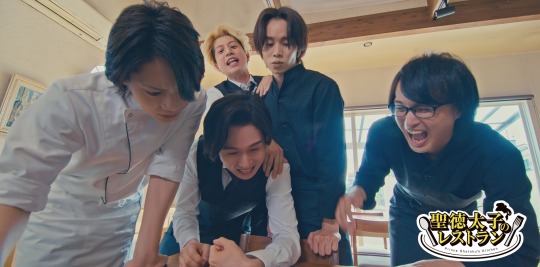
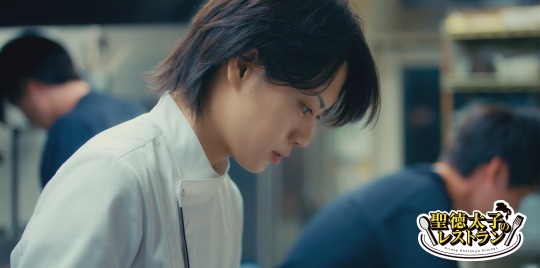
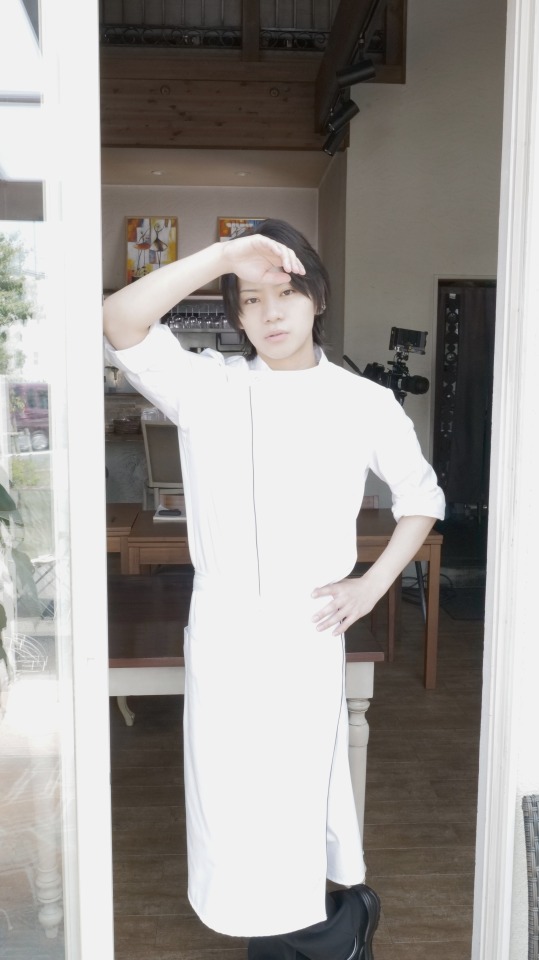
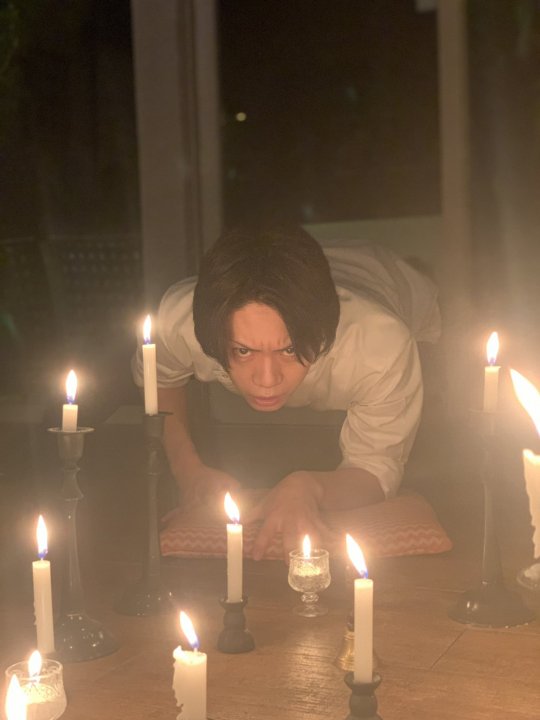
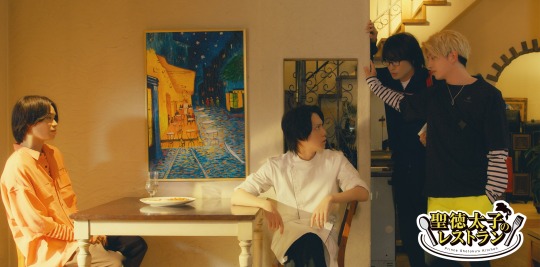
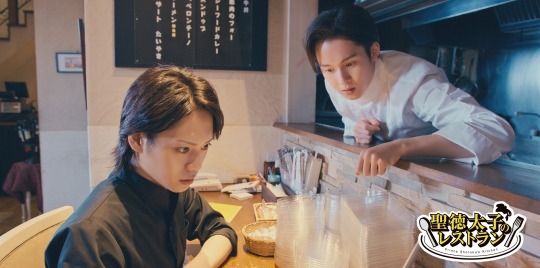


[NEWS] Shotoku: The Release of the Blu-Ray for "Prince Shotoku's Kitchen" has been Announced
RELEASE DATE
May 2023
SUMMARY
At a corner of a residential area, there is a signboard that says "Prince Shotoku's Restaurant".
A restaurant that no customers go to, it caters for "delivery-only" where one chef cooks dishes of 10 different genres. A restaurant that answers, not only requests for Western, Japanese and Chinese cuisine, but everything from rice meals to junk food and desserts, and menus are developed for everything.
Manning the kitchen is a chef, who, although he is young, has an outstanding technique.
Going to the restaurant on behalf of the customers to collect the food is the deliverymen.
This story is like the saintly Prince Shotoku where menus are judged and people's concerns are heard, a heartwarming story with a hungry young people.
CAST
Sato Ryuji as Tokui Hijiri
Tamura Shin as Mikami Haruto
Sorihashi Soichiro as Sawada Akio
Washio Shuto as Kuramochi Keiichirou
Ota Masaki as Hayashi Toshiki
Takasaki Shota as Shimoyashiki Masaki
Brother Tom (Bro.TOM) as Kuchimitsu Yuusuke
NOTE: The narration is done by Morikubo Shotaro.
BLU-RAY BOX CONTENT DETAILS
Main Discs:
The episodes of the TV drama
The cooking variety segments
Bonus:
Mini recipe booklet
6 original coasters
PRE-ORDER LINK AND INFORMATION
Pre-Order Period: Now to 23.59 (Japan time) on February 28, 2023
Price: 9,800 yen
To pre-order the Blu-ray BOX, please refer to this link: HERE
NOTE: For more information about proxy services in Japan, please refer to this link: HERE
MAKING OF "PRINCE SHOTOKU'S KITCHEN"
Footage from the making and behind the scenes of the drama is currently available online.
For more information on how to watch the making, please refer to this link: HERE
Source(s): ( x , x , x , x , x , x , x , x , x )
#Prince Shotoku's Kitchen#Sato Ryuji#Tamura Shin#Ota Masaki#Sorihashi Soichiro#Washio Shuto#Brother Tom#Bro. TOM#Takasaki Shota
6 notes
·
View notes
Photo


[NEWS] Sato Ryuji will be Starring in the New TV Drama "Prince Shotoku's Kitchen"
BROADCAST INFORMATION
Broadcast Start Date: July 29, 2022
Broadcast Start Time: 26.00 (Japan time)
Broadcast Channel: CBC TV
CAST
Sato Ryuji as Tokui Hijiri
Tamura Shin as Mikami Haruto
Sorihashi Soichiro as Sawada Akio
Washio Shuto as Kuramochi Keiichirou
Ota Masaki as Hayashi Toshiki
Takasaki Shota as Shimoyashiki Masaki
Brother Tom (Bro.TOM) as Kuchimitsu Yuusuke
NOTE: The narration will be done by Morikubo Shotaro.
STORY DESCRIPTION
At a corner of a residential area, there is a signboard that says "Prince Shotoku's Restaurant".
A restaurant that no customers go to, it caters for "delivery-only" where one chef cooks dishes of 10 different genres. A restaurant that answers, not only requests for Western, Japanese and Chinese cuisine, but everything from rice meals to junk food and desserts, and menus are developed for everything.
Manning the kitchen is a chef, who, although he is young, has an outstanding technique.
Going to the restaurant on behalf of the customers to collect the food is the deliveryman.
This story is like the saintly Prince Shotoku where menus are judged and people's concerns are heard, a heartwarming story with a hungry young people.
DESCRIPTION OF TOKUI HIJIRI (SATO RYUJI'S CHARACTER)
25 years old. The main character of this story, and the chef of "Prince Shotoku's Restaurant". At first glance, he seems to be difficult to get along with, but he is actually a young man who loves cooking very much.
Official Twitter Account: HERE
Official Website: HERE
Source(s): ( x , x )
#Prince Shotoku's Kitchen#Sato Ryuji#Tamura Shin#Sorihashi Soichiro#Washio Shuto#Ota Masaki#Takasaki Shota#Brother Tom#Bro. TOM
4 notes
·
View notes